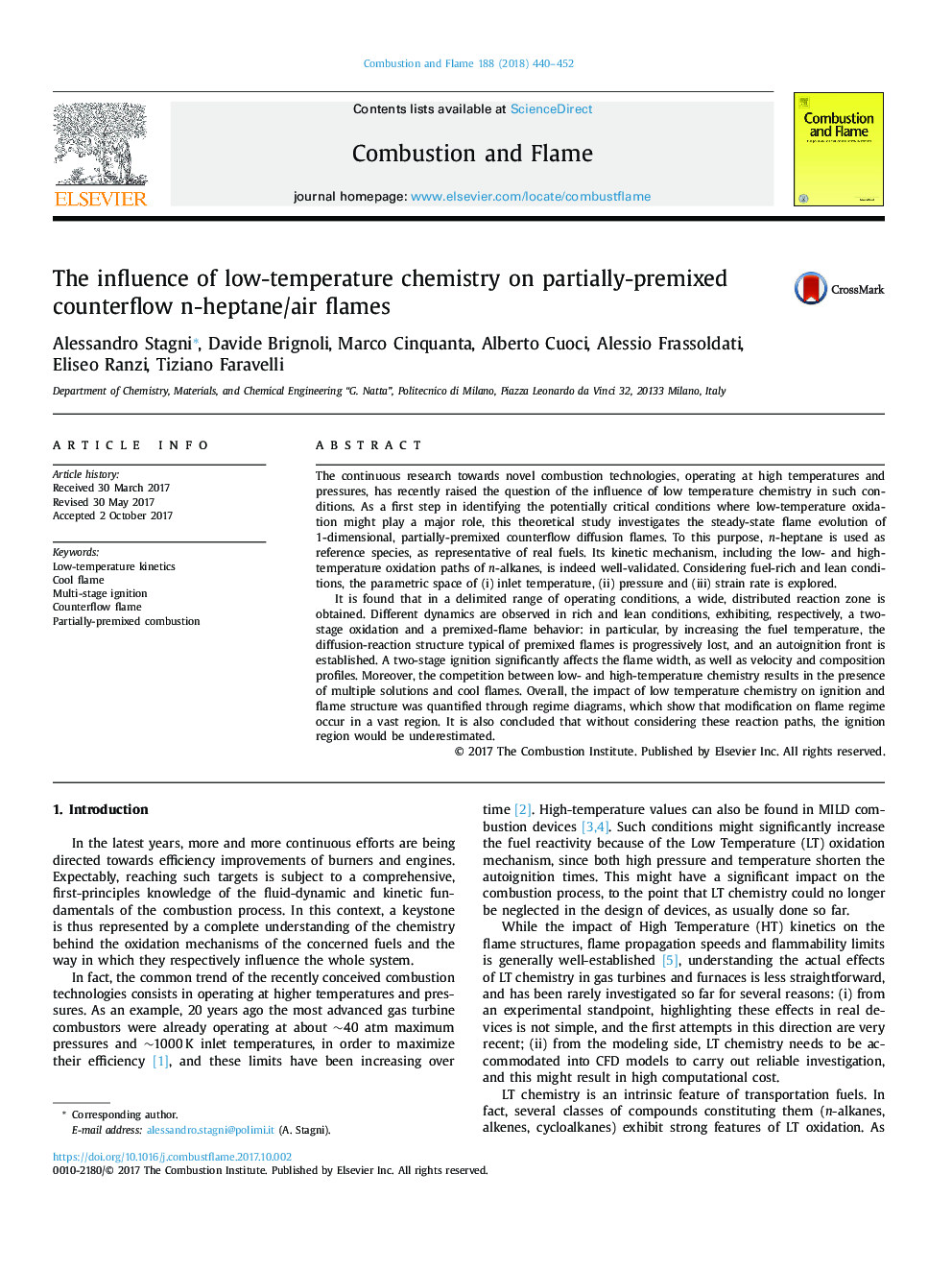| Article ID | Journal | Published Year | Pages | File Type |
|---|---|---|---|---|
| 6593976 | Combustion and Flame | 2018 | 13 Pages |
Abstract
It is found that in a delimited range of operating conditions, a wide, distributed reaction zone is obtained. Different dynamics are observed in rich and lean conditions, exhibiting, respectively, a two-stage oxidation and a premixed-flame behavior: in particular, by increasing the fuel temperature, the diffusion-reaction structure typical of premixed flames is progressively lost, and an autoignition front is established. A two-stage ignition significantly affects the flame width, as well as velocity and composition profiles. Moreover, the competition between low- and high-temperature chemistry results in the presence of multiple solutions and cool flames. Overall, the impact of low temperature chemistry on ignition and flame structure was quantified through regime diagrams, which show that modification on flame regime occur in a vast region. It is also concluded that without considering these reaction paths, the ignition region would be underestimated.
Related Topics
Physical Sciences and Engineering
Chemical Engineering
Chemical Engineering (General)
Authors
Alessandro Stagni, Davide Brignoli, Marco Cinquanta, Alberto Cuoci, Alessio Frassoldati, Eliseo Ranzi, Tiziano Faravelli,
